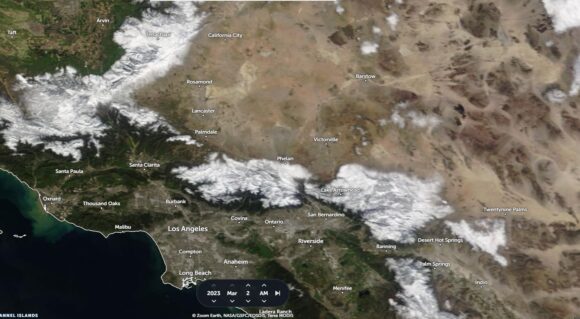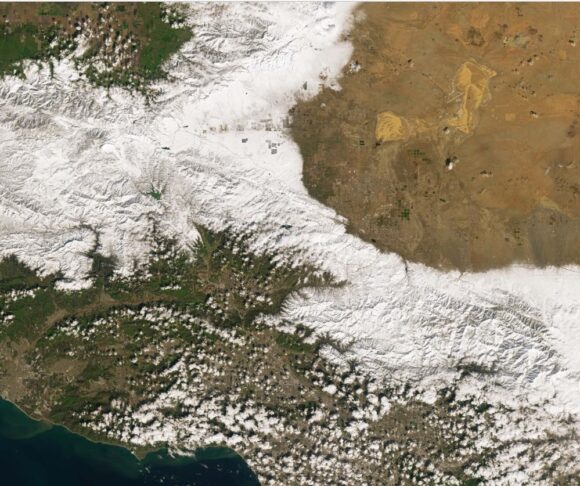Much of South West United States has endured years to decades long drought which has resulted in critical water shortages for cities such as Las Vegas, Los Angeles, Phoenix and others.
Evidence of such a long drought was seen in 2007 being the last time I visited the region. Water reservoirs were low even at that time with many cities enforcing water restrictions for residents and visitors.
Concerns have also been raised for the city of Las Vegas where it was forecast a few years ago that the city could potentially run out of water by the late 2020s.
This winter has seen a difference with one major weather system after another impacting much of California. Instead of continued dry, each weather system has produced desperately needed rainfall and even low level snowfall and as a result, heavy snows have blanketed areas that rarely see such snowfall.
There has been much flooding around Sacramento and regions around San Francisco.

In particular, a late February snowstorm as shown on the attached image (NASA - OLI 2 - Operational Land Imager 2) on Landsat 9 shows a stark image that is rarely seen for the city of Los Angeles.
The San Gabriel Mountains north of the city rise to over 3,000 metres in elevation and on February 26, blizzards swept across the mountains producing:
- 2 metres of snow depth at elevations of 7,000 feet (2,135 metres).
- 600 mm of snow depth at elevations of 6,000 feet (1,830 metres).
Even at elevations of only 600 metres (2,000 feet), 50 mm of snowfall fell such as what occurred at La Crescenta.
While snow did not reach Los Angeles city centre proper, it did produce rainfall of at least 100 mm and 150 mm at Beverly Hills resulting in flooding and flash flooding. Given the terrain of the regions surrounding the city, flash flooding of canyons were common.
It appears that there were flurries of snow as low as 457 metres which is as low as the Hollywood sign that overlooks the area known as Hollywood (North of Los Angeles city).

The images shown on Zoom Earth / NASA /GSFC / EOSDIS - Terra Modis shows a stark image - Thursday 2 March 2023.
The whole mountain range north of Los Angles city is covered in heavy snowfall and even further east, any mountain range of height is also covered in snow. Such snowfall is even visible along the edge of the desert regions, near Palm Springs.
Further, one image shows most of northern Nevada which has a semi arid to arid climate covered in low level snowfall. The mountains overlooking Las Vegas to the west is also covered in snow which is unusual for a desert location which generally has an arid climate. Most incredible is that elevated areas of Death Valley also received snowfall (But not the valley itself). This will melt and settle within the valley creating short term lakes.
Snowfall also fell on elevated areas east of San Diego.
The stronger systems have traveled further east causing havoc, snow storms, thunderstorms and even tornado outbreaks across the mid west.

While the California drought is not broken, the accumulation of the winter storms have eased the water shortages that will certainly improve conditions for the major cities that have endured major drought for years.
